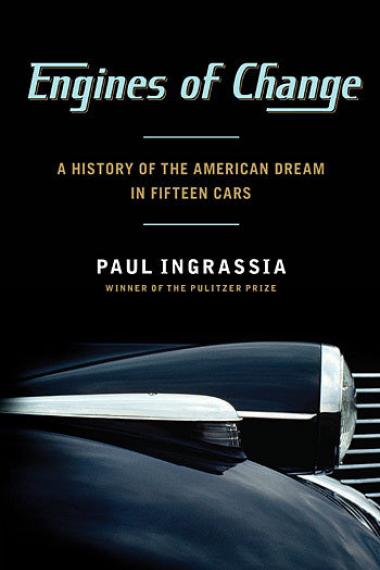“The sun is mirrored even in a coffee spoon,” declared Siegfried Giedion, the great historian of technology and champion of modernism. He believed that studying the artifacts of ordinary life could reveal at least as much about the past as the analysis of kings and wars. This school of history has given us such diverting books as A History of the World in Six Glasses (2005), in which journalist Tom Standage considers the cultural importance of beer and wine, and British Museum director Neil MacGregor’s A History of the World in 100 Objects (2011).
Now Paul Ingrassia finds the sun shining in hubcaps. In Engines of Change: A History of the American Dream in Fifteen Cars, he examines “the automobiles that have influenced how we live and think as Americans.”
A former Wall Street Journal reporter and winner of the Pulitzer Prize for his coverage of Detroit’s auto industry, Ingrassia is also the author of Crash Course: The American Automobile Industry’s Road to Bankruptcy and Bailout—and Beyond (2010). That book plays out as the nightmare to the dream of his new one, which is nostalgic and frankly romantic. It is also entertaining and enlightening.
Making lists of best cars is a favorite activity of car buffs, so it is testimony to the cleverness of Ingrassia’s picks that few critics could point to glaring omissions. But Ingrassia plays some tricks in compiling his list. He goes for an offbeat choice, the Cadillac LaSalle, as a way to talk about Harley Earl, the inventor of American car design, who in the late 1920s figured out how to borrow some of the style of Spain’s aristocratic Hispano-Suiza cars to market Detroit’s newest models.
Ingrassia notes the importance of the Honda Accord, which began rolling off the line in Ohio in 1982 as the first of the so-called Japanese transplants that still regularly top the lists of best-selling models in the United States. And he reaches forward to the American debut in 2000 of the Toyota Prius hybrid, the first car that let drivers wear their green on their sleeves without fear of compromise in road performance. He cheats a bit by pivoting from his unimpeachable inclusion of the iconic military jeep to the Jeep Grand Cherokee and a discussion of the sport-utility craze—sneaking two vehicles into one parking slot.
Cultural critic Jacques Barzun famously told Europeans they could not understand America without understanding baseball. He could have added the pickup truck. Together, the vehicles Ingrassia describes come close to constituting a condensed history of the car industry and car culture in America. While setting cars in the context of their times, he avoids the all-too- common practice of reducing each decade to a sort of newsreel-montage cartoon.
Along the way, Ingrassia recounts some of the familiar chest-thumping tales of motor Americana: the development of the Chevrolet Corvette, say, at the intersection of the 1950s hot rod boom and Hollywood’s fascination with the European sports car. But he also provides details as bright and gleaming as a chrome hood ornament and characters as sharp and overstated as tailfins.
There is Ford designer George Walker, hailed by Time magazine in 1957, the year he turned out the Edsel, as “The Cellini of Chrome.” Walker owned 40 pairs of shoes and 70 suits and moved in a great cloud of Fabergé cologne. And there’s John DeLorean, who in the 1960s turned a modest compact, the Pontiac Tempest, into the fiery GTO, the first muscle car, before going off to found his own doomed car company.
Ingrassia has spent his life covering the auto industry, and he takes the central cultural function of the car as a given. But his book arrives just as the automobile’s role as an American cultural indicator may be passing. This year General Motors will sell more cars in China than in the United States. Recently, automotive executives were jolted by surveys showing the declining importance of driving a car as a rite of passage; one poll found that in 1983 nearly 70 percent of 17-year-olds had driver’s licenses, but in 2008 only 50 percent did. Today’s teenagers are more likely to dream about their next mobile phone than their first set of wheels.

